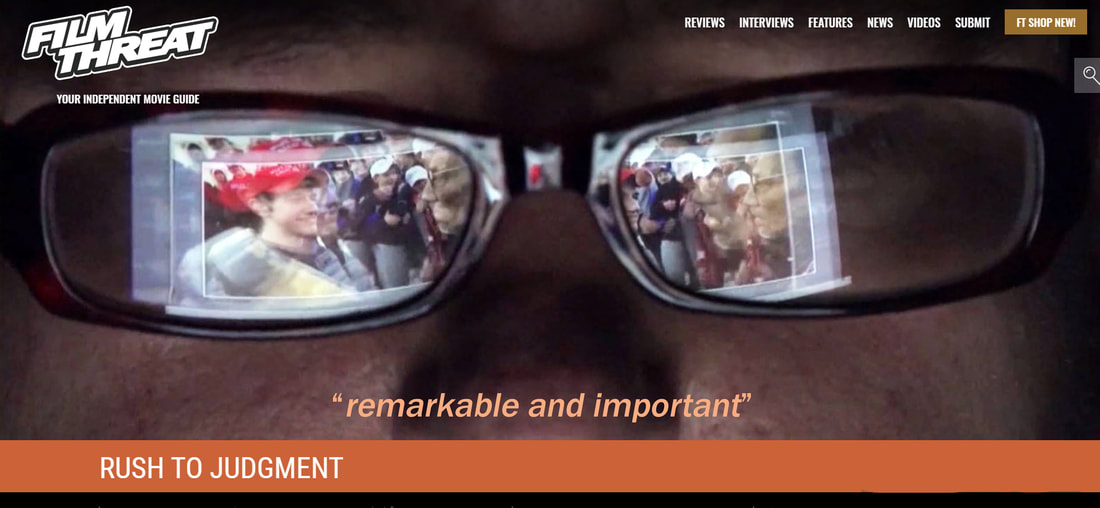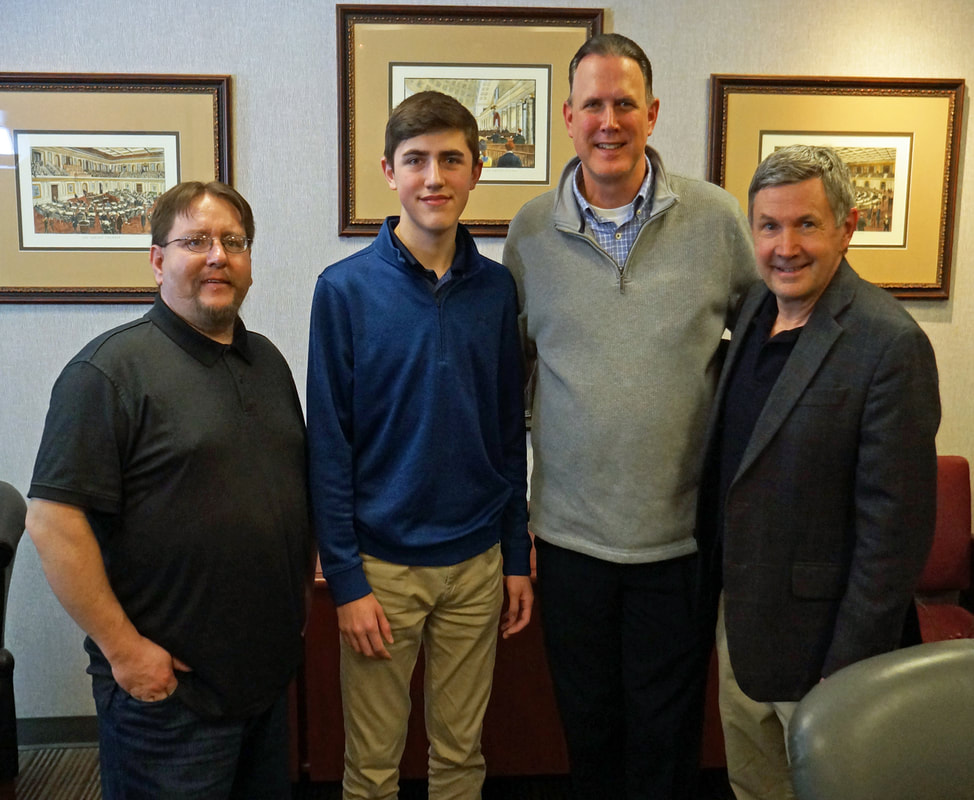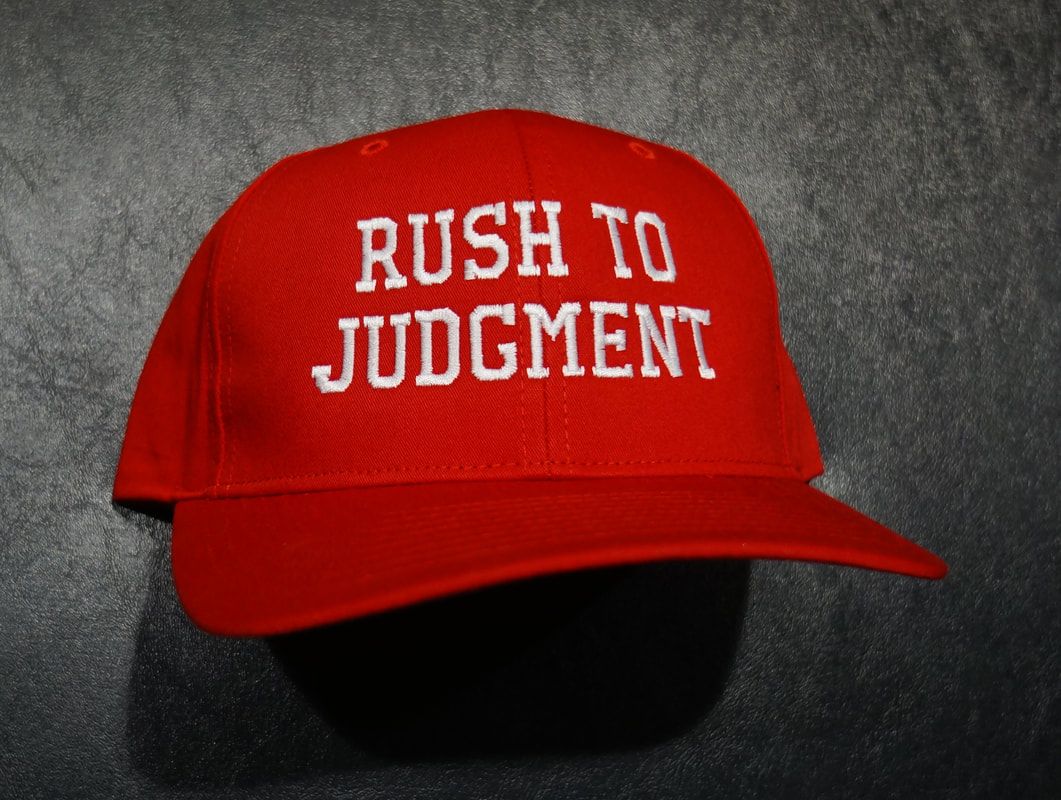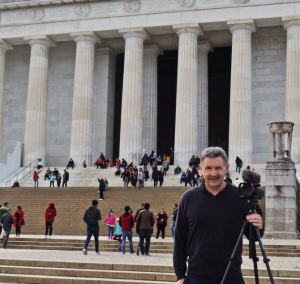By Alan Ng | July 29, 2020
It’s a question worth asking. Just because the worst person in the world was elected President of the United States, does that mean we get to abandon our principles and values as human beings until he leaves office. Our political anger has fueled cancel-culture, and its unintended consequences are massive.
Steve Oldfield’s documentary Rush To Judgement covers the journalistic fiasco associated with Covington Catholic High School student Nicholas Sandmann and the infamous video where allegedly he “assaulted” Nathan Phillips, a Native-American veteran, on the steps of the Lincoln Memorial. NOTE: as of this review, Sandmann has settled two defamation lawsuits with CNN and The Washington Post for a reported $500 million total. At this rate, he’s on track to receive $2 billion when it’s all said and done.
We all remember the viral video of Sandmann donned with a MAGA hat looking smug as he’s face-to-face with Nathan Phillips beating his drum just inches away. Left and right went to immediate judgment against Sandmann. Undoubtedly, the kid has to be racist, and naturally, he has to be bullying a Native American because that’s what all Trump supporters do! The main-stream media went on full attack labeling Sandmann, his fellow students, and Covington Catholic High School as the worst example of Trump racism. Admittedly, it doesn’t look very good.
Within days, Sandmann would appear on the Today Show only to be lectured by Savannah Guthrie, and the veteran Phillips would appear on every other news channel telling his story about how the boys went out of their way to confront the veteran. In an unfortunate event, an internet troll would misidentify and effectively dox the wrong Covington student releasing his address and place pressure on the culinary school he wanted to attend to reject his application, and he wasn’t even there.
As time passed and as the full footage of the Covington confrontation was released to the public, we soon realized that narrative being presented on every single news channel and podcast had every element of the story wrong…except that Sandmann wore a MAGA hat. Phillips wasn’t even a Viet Nam veteran, as reported. In his defense, the media said he was a Viet Nam veteran, and Phillips never corrected them.
As an investigative documentary, Rush To Judgment does what documentaries should do, and that’s present the facts. Admittedly, the film’s thesis was to clearly call out the media’s “rush to judgment” and questions the state of journalistic integrity regarding the truth…whether it fits your desired narrative or not. Filmmakers layout the entire story with copious amounts of news footage piecing together the whole narrative along with interviews with the key players, including Nicholas Sandmann and a few political pundits—mostly on the right—offering commentary.
In the end, the film not only effectively presents the details of the fateful event and tracks how the story spun out of control in the public eye. It also serves as an indictment of how divided we are as a nation. Highly charged political stories like this burn like wildfire—all from knee-jerk reactions and the media landscape chomps at the bit for salacious stories to tell, just for ratings, clicks, and views.
Whatever side of the aisle you find yourself on, Rush to Judgment is a remarkable and important documentary and presents a case study about the broken state of journalism and the volatile state of the national debate (Newsflash, no one debates anymore). One of the tenets from my old college critical thinking classes urged me to “rigorously question ideas and assumptions rather than accepting them at face value.”
If you’re going to ruin a child’s life, make sure you have the facts before you do. In the end, what’s the cost of destroying a person’s reputation simply because we don’t agree with them? So far, $500 million. Now, everyone’s gonna want a MAGA hat.
Rush To Judgment was scheduled to premiere at the 2020 Anthem Film Festival—a Libertarian event.
RUSH TO JUDGMENT (2020) MOVIE SCORE: 8/10
Directed and Written by Steve Oldfield Starring: Nicholas Sandmann, etc.
It’s a question worth asking. Just because the worst person in the world was elected President of the United States, does that mean we get to abandon our principles and values as human beings until he leaves office. Our political anger has fueled cancel-culture, and its unintended consequences are massive.
Steve Oldfield’s documentary Rush To Judgement covers the journalistic fiasco associated with Covington Catholic High School student Nicholas Sandmann and the infamous video where allegedly he “assaulted” Nathan Phillips, a Native-American veteran, on the steps of the Lincoln Memorial. NOTE: as of this review, Sandmann has settled two defamation lawsuits with CNN and The Washington Post for a reported $500 million total. At this rate, he’s on track to receive $2 billion when it’s all said and done.
We all remember the viral video of Sandmann donned with a MAGA hat looking smug as he’s face-to-face with Nathan Phillips beating his drum just inches away. Left and right went to immediate judgment against Sandmann. Undoubtedly, the kid has to be racist, and naturally, he has to be bullying a Native American because that’s what all Trump supporters do! The main-stream media went on full attack labeling Sandmann, his fellow students, and Covington Catholic High School as the worst example of Trump racism. Admittedly, it doesn’t look very good.
Within days, Sandmann would appear on the Today Show only to be lectured by Savannah Guthrie, and the veteran Phillips would appear on every other news channel telling his story about how the boys went out of their way to confront the veteran. In an unfortunate event, an internet troll would misidentify and effectively dox the wrong Covington student releasing his address and place pressure on the culinary school he wanted to attend to reject his application, and he wasn’t even there.
As time passed and as the full footage of the Covington confrontation was released to the public, we soon realized that narrative being presented on every single news channel and podcast had every element of the story wrong…except that Sandmann wore a MAGA hat. Phillips wasn’t even a Viet Nam veteran, as reported. In his defense, the media said he was a Viet Nam veteran, and Phillips never corrected them.
As an investigative documentary, Rush To Judgment does what documentaries should do, and that’s present the facts. Admittedly, the film’s thesis was to clearly call out the media’s “rush to judgment” and questions the state of journalistic integrity regarding the truth…whether it fits your desired narrative or not. Filmmakers layout the entire story with copious amounts of news footage piecing together the whole narrative along with interviews with the key players, including Nicholas Sandmann and a few political pundits—mostly on the right—offering commentary.
In the end, the film not only effectively presents the details of the fateful event and tracks how the story spun out of control in the public eye. It also serves as an indictment of how divided we are as a nation. Highly charged political stories like this burn like wildfire—all from knee-jerk reactions and the media landscape chomps at the bit for salacious stories to tell, just for ratings, clicks, and views.
Whatever side of the aisle you find yourself on, Rush to Judgment is a remarkable and important documentary and presents a case study about the broken state of journalism and the volatile state of the national debate (Newsflash, no one debates anymore). One of the tenets from my old college critical thinking classes urged me to “rigorously question ideas and assumptions rather than accepting them at face value.”
If you’re going to ruin a child’s life, make sure you have the facts before you do. In the end, what’s the cost of destroying a person’s reputation simply because we don’t agree with them? So far, $500 million. Now, everyone’s gonna want a MAGA hat.
Rush To Judgment was scheduled to premiere at the 2020 Anthem Film Festival—a Libertarian event.
RUSH TO JUDGMENT (2020) MOVIE SCORE: 8/10
Directed and Written by Steve Oldfield Starring: Nicholas Sandmann, etc.
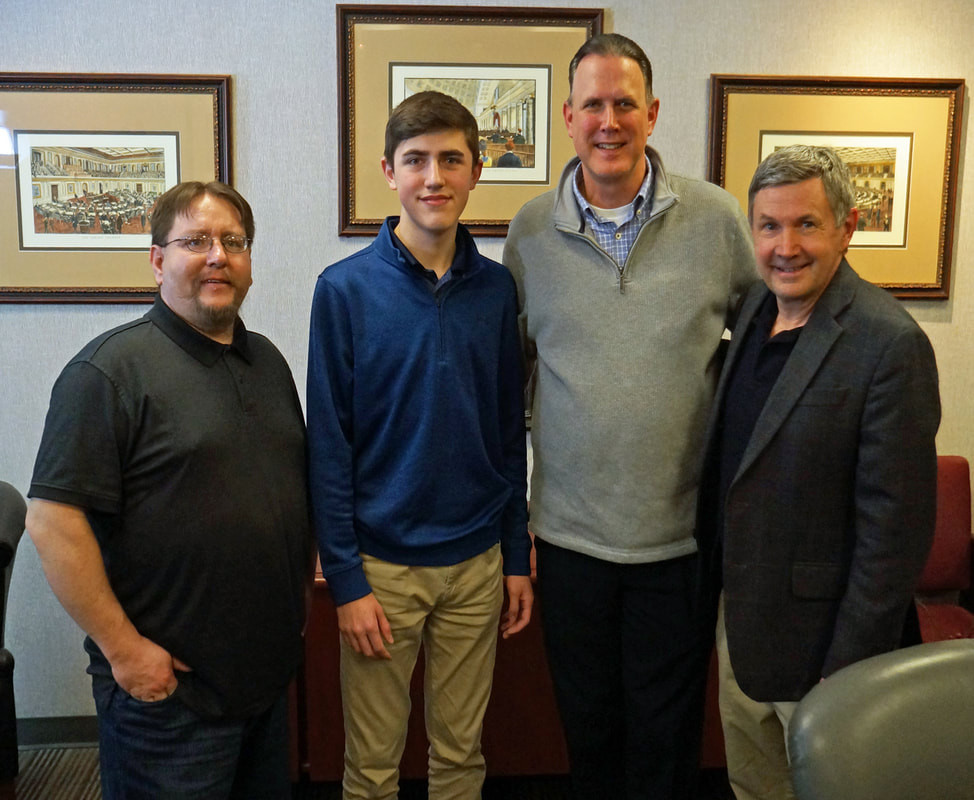
Nick Sandmann Documentary ‘Rush To Judgment’ Chronicles Disturbing Covington Catholic Media Smear
A new film does a deep-dive into the 2019 Covington Catholic event that was a media creation, and it's worth your time.
By Gabe Kaminsky
FEBRUARY 18, 2021 “Rush to Judgment” is an important and timely documentary about leftist ideology on social media and the mob who pounces inexhaustibly. In 2019, they famously pounced on Nick Sandmann, an innocent teen wearing a MAGA hat. This is that story.
In July 2020, filmmakers Steve Oldfield and Ryan Anderson were set to premiere their documentary “Rush to Judgment” at the Anthem Film Festival. But due to COVID-19 restrictions, the libertarian-leaning showcase was canceled. “Rush to Judgement” would have premiered in the same prime-time slot as Adam Carolla and Dennis Prager’s “No Safe Spaces” in 2018. Nonetheless, Oldfield told me that he is working with several colleges across the country to begin a tour, including a premiere and lecture-seminar format. The filmmakers are also working on replacing the documentary at a festival.
The documentary is a comprehensive study into the media’s character assassination of Sandmann and the students at Covington Catholic High School in 2019 at the Lincoln Memorial. After videos went viral on social media that depicted Sandmann in a MAGA hat staring at Native American activist Nathan Philipps, the mainstream media took the opportunity to presuppose his racism. They molded the teenagers into the narrative they had been pushing about Trump supporters since his election; that they are all racist and evil.
Among other details omitted from the one video that would slander Sandmann for simply standing still, the media neglected the group of Black Hebrew Israelites harassing the students prior to the Phillips encounter—calling them “school shooters,” “dirty a— little crackers,” and “a bunch of incest babies.”
Little did The Washington Post, CNN, and NBCUniversal know that almost a year later they would be forced to settle in the defamation lawsuits against Sandmann, for undisclosed sums.
Steve Oldfield, the director of “Rush to Judgment,” felt compelled to tell this story. Oldfield covered Hollywood and culture for many years for Fox19 and graduated from neighboring school Covington Latin in Northern Kentucky.
When Oldfield awoke on Jan. 19, 2019, his phone was blowing up with Facebook posts from friends and colleagues at The New York Times, The Washington Post, CNN, and NPR lambasting Sandmann without evidence. He began to defend the boy, unaware it would lead to an entire documentary.
‘I realized I’ve got an in. I’m going to do a documentary.’“I called a friend of mine who worked at the school as an assistant principal. I said, ‘I need to know what’s going on here. Is this kid a racist? Is this kid a monster?’ And she said, ‘No, he’s great and from a solid family.’ Ryan Anderson (left) and Steve Oldfield (right) with Nick Sandmann and his father, Ted. (Provided.)
So I realized I’ve got an in. I’m going to do a documentary. And I called a friend of mine who is much more left-leaning than I am,” Oldfield told me. “I thought ‘That will kind of balance it out a little bit.’ We met on a Sunday and came up with the name ‘Rush to Judgment,’ and on Monday I covered a protest in favor of Nathan Philipps, against the kids, that was held at Covington Latin.”
In the documentary, Sandmann expresses his rationale for the biased media coverage, and why he and his friends were given brutally unfair treatment: “Their rush to judgment I think was aided by the fact that Nathan Phillips had put out four or five interviews by the time I was able to talk.”
His father, Ted, recalls the threats his family received after the video went viral.
“We know where you live,” people told him, “we’re going to put your son six feet under.” He also recounted in the film his changing perception of leaving his home. “Every time you step out the door, you’ve got to realize now that I’m not in the safety of my home,” Ted said. “I’m out here, and the world has changed.”
“Rush to Judgment” is being represented by Contemporary Issues Agency to help deliver their message to college campuses, so they can engage students on media and fact-checking in a seminar that features a presentation of the film. The agency is left-leaning and represents a lot of figures from the Black Lives Matter movement. They are working with the filmmakers because they believe the story is a good lesson for young Americans.
It is the most unlikely bond anyone could have foreseen, but something the director was not as shocked about given what happened.
“They saw our documentary and they were like ‘This isn’t a right-wing thing, this is a what is the right thing, as in correct.’ Everyone should use civil discourse online, whether you are a Democrat or a Republican or a Libertarian,” Oldfield said. “You shouldn’t just retweet something because it angers you, and you don’t say the most horrible thing you can think of to virtue-signal to show you’re woke. That goes for whether you are Donald Trump follower or a Bernie Sanders follower.”
Julie Irwin Zimmerman, an Atlantic contributor, appears in the documentary to discuss her failure in 2019 to report on the facts of the Covington Catholic story. Zimmerman is one of many who “failed the Covington Catholic test,” as her apologetic piece outlined on Jan. 21, 2019. “I ultimately blame news consumers for prizing emotion over facts,” Zimmerman says in the documentary.
While Zimmerman is right to blame the news consumers, it seems like a deflection to not foremost blame the newsmakers who allow themselves to be guided by unthinking consumers.
While Sandmann was the undoubtedly biggest recipient of the media shame and hate, the documentary uncovered information about an African-American student at Covington Catholic who was attacked by the Hebrew Israelites. The boy was traumatized after the event and dropped out of school.
“This affected not just Nick Sandmann,” the director said, “But a bunch of other kids as well at the school. We were the only people to get [the boy] and his family to do interviews.”
Another student at the high school was misidentified by the media as Sandmann in the first 24 hours of the incident. He was not even in Washington, D.C. According to the filmmakers, the boy and his mother received several death threats and the authorities had to post a police officer outside their home in Kentucky. At the time, the student’s brother was being married and the family was celebrating.
These additional disturbing narratives are what “Rush to Judgment” makes an intimate effort to highlight—the ones unseen and unheard by the larger public because of the media’s quench for views and clicks, even if it means ruining the lives of teens.
The following year, the Sandmann family hired private security so they could attend the 47th Annual March for Life event in Washington, D.C. “We had people who had tried to scare us into not going,” Nick said, “But it’s something I value way too much to not go to.”
“And second,” Nick continued, “I wanted to show everyone that I’m not scared to stand up for what I believe in, once again.”
“We all wanted to go back,” Ted Sandmann said, “We knew we had to go back.”
In 2020, Nick Sandmann addressed the nation at the 2020 Republican National Convention. “My life changed forever in that one moment,” he said, referring to the misconstrued encounter at the Lincoln Memorial.
The filmmakers of “Rush to Judgment” have a speech at a school scheduled for next month. While the filmmakers are pleased to be presenting Sandmann’s story on college campuses, they are also still searching for a new home for “Rush to Judgment,” and believe that this a story the nation cannot possibly ignore.
Head to the website to learn more about the bold filmmakers’ plans.
Gabe Kaminsky is an intern at The Federalist, and a student at the University of Pittsburgh. His work has appeared in The Daily Wire, Townhall.com, The Washington Times, The American Conservative, RealClearPolitics, The Washington Examiner, and other outlets. He is a participant in the Academy program at The Heritage Foundation. Follow him on Twitter @Gabe__Kaminsky
Photo Producer Ryan Anderson and Director Steve Oldfield with Nick Sandmann and his father. Photo via Ryan Anderson and Steve Oldfield
Photo AP/YouTube

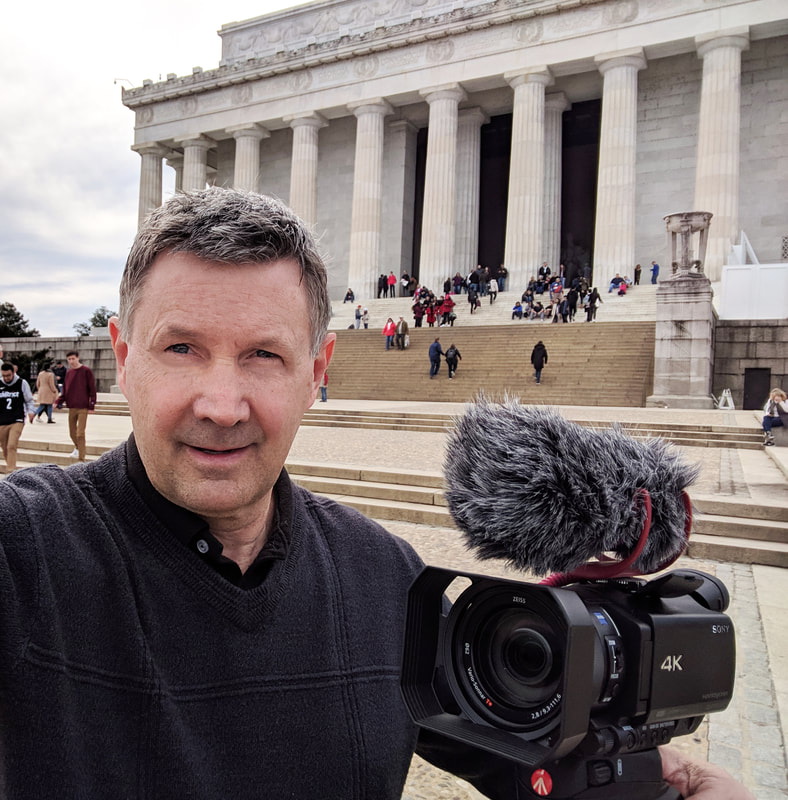
Covington's Lesson
by Leif Le Mahieu | August 06, 2020 11:00 PM
On July 24, Nick Sandmann announced on Twitter that his $250 million defamation lawsuit against the Washington Post had been settled. Sandmann’s suit revolved around the Washington Post's coverage of a viral video of Sandmann and his Covington Catholic classmates at the 2019 March for Life in Washington, D.C. The footage showed the students, many of whom were wearing “Make America Great Again" hats, interacting with Native American activist Nathan Phillips at the Lincoln Memorial. This interaction quickly earned the students widespread condemnation and scorn from media pundits, religious leaders, and politicians.
They believed that Sandmann and his classmates were harassing Phillips by blocking his path and chanting inappropriate slogans. To many in the media and on Twitter, the Covington Catholic students represented the white supremacy and bigotry they believed to be so prevalent in Donald Trump's America. Footage of the event and witness testimony revealed a more complicated story. While waiting at the Lincoln Memorial for school buses to pick them up after the March for Life, the students were approached by a group of Black Hebrew Israelites. This group began shouting vulgar and racially insensitive comments at the students. Phillips, who was in Washington for another demonstration, walked in between both groups, beating a drum. He walked straight up to where Sandmann was standing alongside his classmates. Sandmann, unable to back away because of the large crowd, stood as Phillips proceeded to beat the drum in his face. Phillips believed he was deescalating a tense situation, while Sandmann later confessed he did not know what was happening.
The day after the incident, filmmakers Steve Oldfield and Ryan Anderson decided to investigate and produce a feature-length documentary on the controversy. The end product, titled Rush to Judgment, was set to premiere at the Anthem Film Festival in Nevada in July before cancellation due to COVID concerns. Despite this setback, Oldfield and Anderson still hope to take the film to college campuses, film festivals, and a streaming service this coming year.
“We want everyone to see this, including people who might not agree politically with wearing a MAGA hat, or might not be, you know, a fan of President Trump. This isn’t about Trump, this isn’t about politics as much,” Oldfield explained. “It’s about what do you do with an image that you’ve been given, what do you do with a video, how do you react to it? Do you share it, or do you investigate it?”
The initial coverage of the Covington controversy surprised Oldfield, as he had filmed at Covington Catholic for a promotional video and had been impressed with the students' conduct. Spurred on by this and the fact that he had exclusive access to footage of the school, Oldfield called Anderson, and they began to discuss making a film the day after the incident. Going through hundreds of YouTube videos to create a back-and-forth between online commentators and interviewees, Anderson believes that viewers of the film will come to recognize the importance of critical thinking. “Really, the overall, arching goal of it for me was to get people to just think more critically — really pay attention to how they’re consuming media and, you know, research.”
After years of working in TV news, Oldfield believes the coverage of Sandmann and his classmates represents a low point in the history of TV broadcasting. “This is the classic case of why journalists can never take something they see that’s blowing up on social media and just put it out there as a news story, without doing any research,” he said.
Some of the journalists who were quick to pile on the Covington students appear to have learned their lesson. Featured in the film, Julie Irwin Zimmerman, a contributor to the Atlantic, wrote an article discussing her handling of the story. In it, she wrote, “If the Covington Catholic incident was a test, it’s one I failed — along with most others. Will we learn from it, or will we continue to roam social media looking for the next outrage fix?”
Politically, both Oldfield and Anderson identify as libertarians. They believe this gives them a unique vantage point to tell the story. “We saw this as a big Democrat vs. Republican kind of thing, which we thought was really wrong, the way that people assumed that Nick Sandmann was a monster because he was wearing a MAGA hat,” Oldfield said.
When putting together interviews for the film, Sandmann deeply impressed Oldfield. “Nick Sandmann is one of the nicest, smartest, most articulate kids I have ever met, and I’ve worked as a high school teacher for 10 years,” Oldfield said. “And what I would say is, all these hateful people on the internet who decided to attack him and make him a symbol of bigotry in this country, they picked the wrong kid.”
In the film, Sandmann relates how the media drowned out his perspective. “Their rush to judgment I think was aided by the fact that Nathan Phillips had put out four or five interviews by the time I was able to talk.” Sandmann’s father, Ted, discussed with Oldfield the violent nature of many of the messages directed at his family. Threats included “We know where you live,” “We’re going to put your son six feet under,” and “You better be watching over your back every day.” “Every time you step out the door, you’ve got to realize now that I’m not in the safety of my home,” he explained. “I’m out here, and the world has changed.”
Sandmann was not alone in experiencing the rage of the social media mob. In fact, the ire of the crowd first directed itself at Covington student Michael Hodge, who people believed to be Sandmann. Hodge actually wasn’t with the school, but away attending his brother’s wedding. Someone found his mother’s phone number and called to inform her how horrible her son was. Others in the online mob threatened violence against Hodge and his family, while some told Hodge’s mother that she should have aborted her son.
This anecdote illustrates the sobering reality of social media’s effect on the news cycle and its toxic consequences for civic discourse. Oldfield wants consumers and content producers viewing the film to “learn that it’s not OK to just trust a picture and a tweet, and that it is not OK to say the most hateful, horrible thing you can about someone you disagree with online because you think that’s going to make you look good.”
With no verification or further research, the mob decided that Sandmann, Hodge, and their classmates were evil and thus deserving of hate. This environment is exactly what Oldfield and Anderson expose in Rush to Judgment and why the film speaks so powerfully to today’s cancel culture environment and its vigorous enforcers.
Leif Le Mahieu is a journalist whose work has appeared in outlets such as WORLD and Religion Unplugged.

- Documentary on CovCath student Nick Sandmann’s viral encounter at Capitol streams starting Friday Feb 25th, 2021 · 0 Comment
Rush to Judgment, the documentary about then-Covington Catholic High School student Nick Sandmann’s viral 2019 encounter at the Lincoln Memorial in Washington D.C., will be released via the streaming service Vimeo this Friday.
Greater Cincinnati filmmakers Steve Oldfield and Ryan Anderson spent more than a year investigating the story and scored exclusives with Sandmann, his father and some other major players in the story.
Film Threat reviewer Alan Ng wrote, “Whatever side of the aisle you find yourself on, Rush to Judgment is a remarkable and important doc.”
Producer Ryan Anderson, Nick Sandmann and his dad, Ted, and Stephen Oldfield after interviews in 2020.
The film was selected for the Anthem Film Festival in Las Vegas and The Louisville International Festival of Film in 2020 but the filmmakers made the difficult decision to drop out of both festivals when they cancelled in-person screenings due to COVID-19 restrictions.
“We hope to return to traditional festival screenings at Anthem and Louisville later this year but we really didn’t want to wait any longer,” Oldfield said.
After a feature earlier this month by journalist Gabe Kaminsky in The Federalist generated more than 5,000 hits to their website, Oldfield and Anderson decided it was time.
“The whole movie distribution business has changed so much in the past year, we thought that a video version of self-publishing was best,” Anderson said.
The filmmaking duo are getting some help from the pros when it comes to booking a speaking tour on college campuses. They signed with Contemporary Issues Agency, which represents a wide variety of speakers across the country. Oldfield and Anderson already have spoken to one college in Missouri and have a presentation scheduled next month in Indiana. Oldfield hopes to also bring their film and discussion to Thomas More University, where he teaches journalism and film courses.
“Once COVID restrictions are eased, we’d love to do a whole panel discussion with some of the great media experts we feature in the film,” Oldfield said.
The filmmakers talked with Julie Irwin-Zimmerman of The Atlantic, and Joe Starrs, who is the director of the Journalism Program at The Fund For American Studies in Washington.
Oldfield was a fellow in the program’s first class at Georgetown University back in 1985. He graduated from Northwestern University’s Medill School of Journalism and from Covington Latin, a school that hasn’t historically enjoyed a warm relationship with Covington Catholic.
“If you’d have told me as a kid that I’d be devoting several years of my life to defending Cov Cath, I never would have believed it,” Oldfield said. “But I think they have a really great school and were treated unfairly on so many levels.”
Oldfield funded the documentary entirely on his own with Anderson. They knew they had done the right thing when finally interviewing the Sandmanns after trying for more than a year.
“We had actually shot and edited the entire doc without Nick and his Dad because we weren’t sure they’d be able to talk due to their lawsuits against media outlets,” Oldfield said. “Once they scored their first settlement and we got the okay, we were blown away by Nick’s class and eloquence.”
They added the interviews throughout the documentary.
In addition to the Sandmanns, the film features Cov Cath graduate Michael Hodge and his mother Pamela. Michael was first identified as the boy in the viral video by the online mob. He and his family weren’t even in Washington, D.C. for the March for Life as they were hosting a family wedding that weekend in Northern Kentucky.
“They were trying to celebrate and kept getting thousands of angry and threatening messages on Twitter,” Oldfield said. “We thought it was important to include their story to show it wasn’t just the Sandmanns who suffered.”
Filmmakers also scored an exclusive with an African-American boy who was verbally attacked by members of the Hebrew Israelites just before the encounter at the Lincoln Memorial. The Cov Cath freshman was so traumatized by the event, he dropped out of school for the rest of 2019 and then transferred to a public school.
“He’s a really great kid with awesome parents – they showed another side that never made it into the media’s coverage,” Oldfield said.
Along with some other Covington Catholic students, parents and journalists, Anderson wanted to include commentators on social media from around the world. He watched hundreds of hours of “vloggers” to craft a diverse conversation in the documentary.
“I found people from as far away as Australia and Malaysia talking about Nick Sandmann and Covington Catholic,” Anderson said. “Their comments run the gamut from insightful and profound to downright funny,” he said.
Rush to Judgment can be streamed on Vimeo Friday and through www.RushToJudgmentDocumentary.com

NKY filmmaker working on documentary, symposium about Cov Cath encounter at Lincoln Memorial
Northern Kentucky filmmaker Steve Oldfield is working on a documentary and academic symposium to address what journalists and news consumers can learn from the media mayhem surrounding the encounter between Covington Catholic students and other demonstrators at the Lincoln Memorial back in January.
“I woke up that Saturday morning to see my Facebook blowing up with all kinds of nasty comments from friends of mine around the country,” Oldfield said.
He immediately got to work defending the students and asking for his online friends to calm down until the whole story was available. Oldfield was so engrossed in the story and writing reactions to negative posts, he didn’t put down his cell phone and get out of bed until 11 a.m.
“I couldn’t believe how vicious people were – and many of my friends are experienced journalists and filmmakers I’ve known since we were in college,” said Oldfield, who graduated from Northwestern University’s Medill School of Journalism.
“By the next day, I knew I had to produce a documentary,” he said.
He decided on a title right away, “Rush to Judgment: Encounter at the Lincoln Memorial.”
Oldfield, who moderates the Northern Kentucky Youth Advisory Board for high school leaders, said he has been impressed with the Covington Catholic community.
“Their principal has created a very supportive culture and I’ve met lots of great teachers and students,” he said. Oldfield said he wants to dispel misconceptions about the school and Northern Kentucky.
“Some of my friends on the coasts immediately assumed these were a bunch of rednecks,” Oldfield said. “They couldn’t be more wrong about Covington Catholic.”
Oldfield has produced two documentaries that have aired on KET. Lines of Sight tells the story of Kentucky born painter Jim Hall. Oldfield co-directed Covington at 200: Points of View for the city’s bicentennial. He says he has plenty of material and stories to draw from.
“I got to know and love Covington over the year and a half we made that doc,” he said.
For Rush to Judgment, Oldfield plans to examine how many news organizations let themselves get caught up in a mob mentality online. Oldfield is interviewing journalists and media observers here in Greater Cincinnati and across the country.
He plans to take a more academic approach than some other projects because his video will also be used in his classes at Thomas More University, where Oldfield teaches Journalism and documentary courses in the Communication Dept.
“Several of the experts I’ve interviewed have agreed to join me on campus for an in-depth discussion with students and the community this Fall,” Oldfield said.
One of them, Julie Irwin Zimmerman, wrote an article called “I failed the Covington Catholic Test,” for The Atlantic. Zimmerman and Oldfield graduated from Northwestern the same year.
“She’s a great journalist who wasn’t afraid to admit that she rushed to judgment like a lot of people,” Oldfield said.
To learn more, go to www.RushToJudgmentDocumentary.com.
